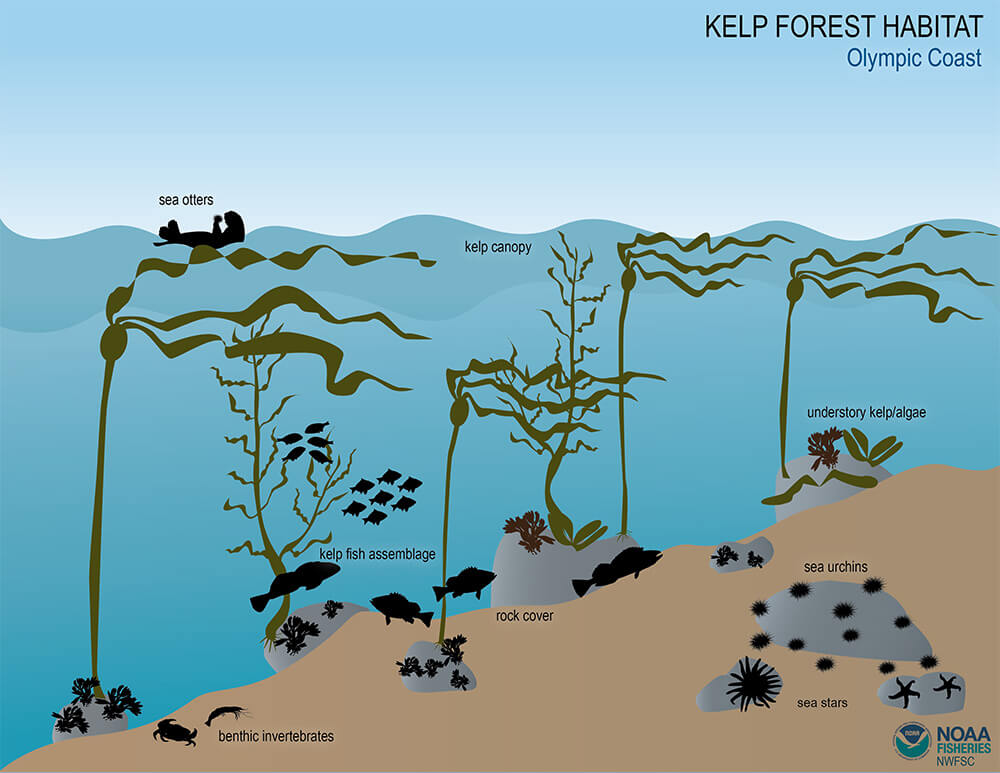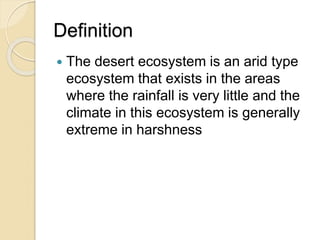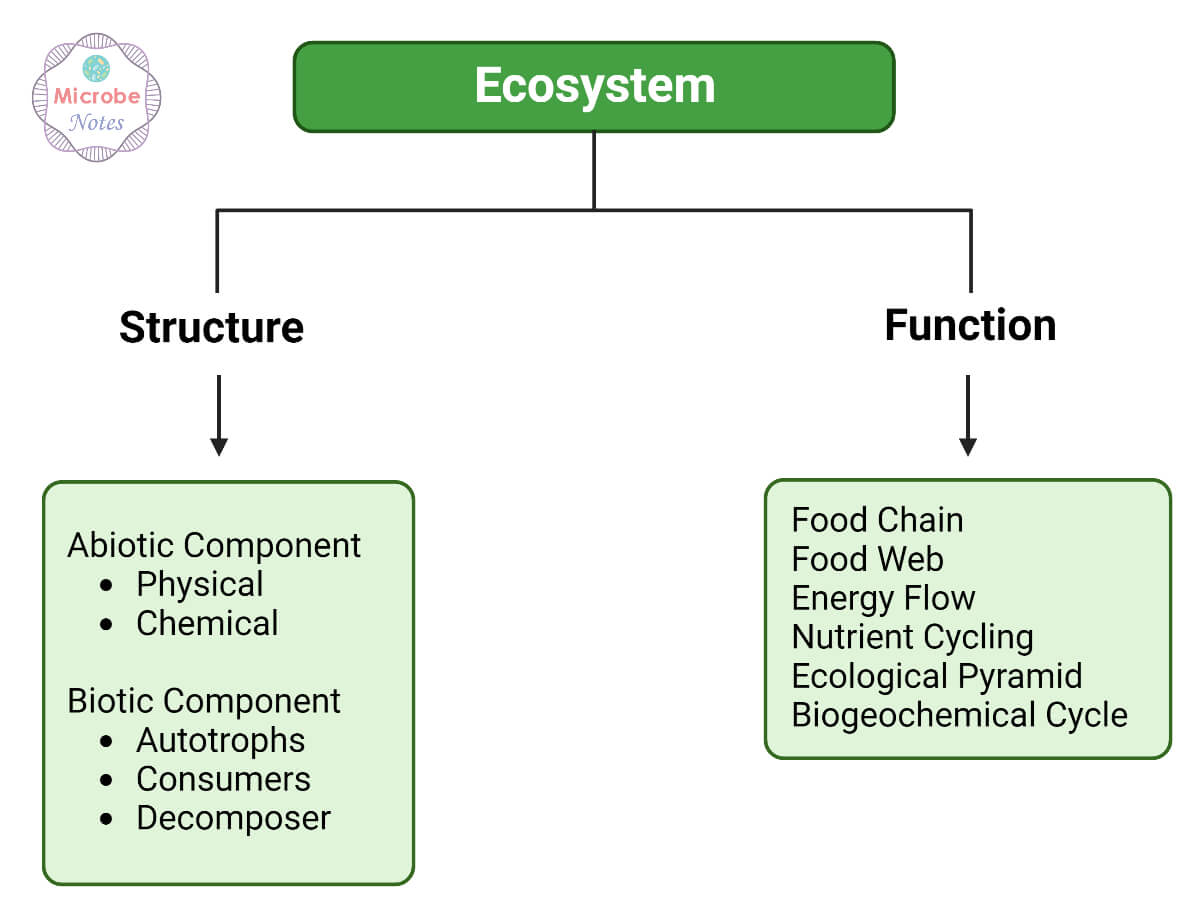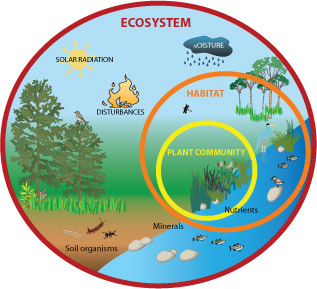Topic ecosystem services supporting: Explore how ecosystem services supporting our planet foster a sustainable future, enhancing biodiversity and human well-being through nature"s invaluable contributions.
Table of Content
- What are some examples of supporting services provided by ecosystem services?
- Understanding Ecosystem Services
- Types of Ecosystem Services
- The Role of Supporting Services
- Benefits of Ecosystem Services to Humans
- Challenges in Ecosystem Service Conservation
- Strategies for Sustaining Ecosystem Services
- YOUTUBE: Supporting Services of Ecosystem Services
- Case Studies: Successful Ecosystem Service Projects
What are some examples of supporting services provided by ecosystem services?
Supporting services provided by ecosystem services include:
- Nutrient cycling – Nutrients such as nitrogen or phosphate go through a natural recycling process.
- Water cycling – Water circulates and is purified through natural processes.
READ MORE:
Understanding Ecosystem Services
Ecosystem services are the vast array of benefits that ecosystems provide to humanity, essential for our survival and well-being. These services are often taken for granted, yet they underpin our economy, society, and existence.
- Provisioning Services: Include the production of food, fresh water, fuel, fiber, and genetic resources.
- Regulating Services: Natural ecosystems regulate climate, diseases, water quality, and pollination, among other processes.
- Cultural Services: Offer aesthetic, spiritual, educational, and recreational values that enrich human life.
- Supporting Services: These are fundamental for the production of all other ecosystem services, including soil formation, nutrient cycling, and primary production.
Understanding the interplay between these services and the impact of human activity on their delivery is crucial for sustainable management and conservation efforts. By appreciating and valuing ecosystem services, we can work towards maintaining and enhancing our environment for future generations.
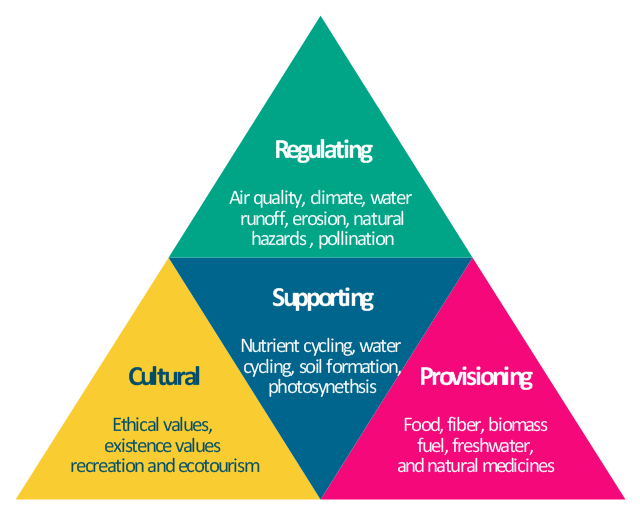
Types of Ecosystem Services
Ecosystem services are critical to the wellbeing of our planet and all who inhabit it. They are broadly categorized into four types, each playing a vital role in supporting life in myriad ways.
- Provisioning Services: These are the products directly obtained from ecosystems, such as food, fresh water, timber, fiber, and genetic resources.
- Regulating Services: These services include the regulation of climate, floods, disease, wastes, and water quality as well as pollination and ecosystem disturbance.
- Cultural Services: Non-material benefits obtained from ecosystems through spiritual enrichment, cognitive development, reflection, recreation, and aesthetic experiences.
- Supporting Services: Services such as soil formation, photosynthesis, primary production, nutrient cycling, and water cycling that underlie the production of all other ecosystem services.
Understanding these categories helps us appreciate the complexity of ecosystems and the indispensability of their services to humanity. By recognizing and valuing these services, we can better support conservation efforts and sustainable management practices that protect and enhance our natural environment.
The Role of Supporting Services
Supporting services form the foundation of all ecosystem services, ensuring the health and functioning of ecosystems worldwide. These services include soil formation, photosynthesis, nutrient cycling, and water cycling, which are crucial for the production of food, clean water, and the regulation of the environment.
- Soil Formation: The process by which organic and inorganic materials are broken down to create fertile ground that supports plant life and agriculture.
- Photosynthesis: The conversion of light energy into chemical energy by plants, providing the primary energy source for nearly all ecosystems.
- Nutrient Cycling: The movement and exchange of organic and inorganic matter back into the production of living matter, ensuring the availability of essential nutrients for various forms of life.
- Water Cycling: The continuous movement of water on, above, and below the surface of the Earth, which is vital for maintaining the habitats of a vast array of species.
These supporting services are not only fundamental to the survival of ecosystems but also to human existence. They underpin the provision of food, water, and air, making them indispensable for the sustainability of life on Earth. Recognizing and preserving these services is crucial for maintaining ecological balance and ensuring a sustainable future for all.
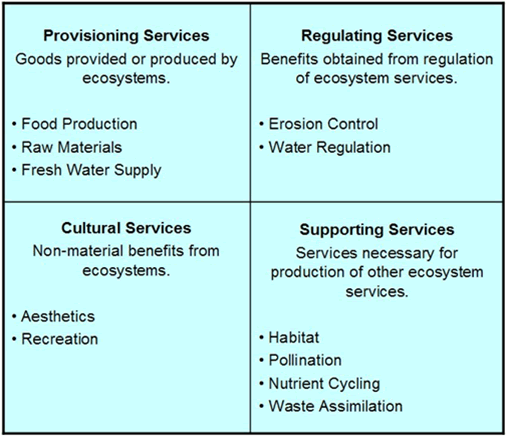
Benefits of Ecosystem Services to Humans
Ecosystem services provide numerous benefits to humans, supporting not only our survival but enhancing our quality of life in profound ways. These natural services are indispensable, offering everything from tangible resources to essential regulatory functions that maintain the environmental conditions necessary for our well-being.
- Food and Water Supply: Provisioning services ensure the availability of fresh water and food, fundamental for human survival.
- Regulation of Climate and Diseases: Regulating services help mitigate climate change effects and control the spread of diseases.
- Pollination and Natural Hazard Regulation: Essential for the production of crops and the prevention of natural disasters.
- Cultural and Recreational Benefits: Cultural services provide recreational, aesthetic, and spiritual benefits that enrich human life.
- Economic Benefits: Many industries, including agriculture, fisheries, and tourism, directly depend on ecosystem services, contributing significantly to the global economy.
- Supporting Biodiversity: Supporting services such as nutrient cycling and habitat formation are crucial for maintaining biodiversity, which in turn supports ecosystem resilience and productivity.
By safeguarding ecosystem services, we not only protect these vital benefits but also promote a sustainable future where humans and nature can thrive together.
Challenges in Ecosystem Service Conservation
Conserving ecosystem services presents numerous challenges, exacerbated by human activities and environmental changes. These challenges must be addressed to ensure the sustainability of vital services that ecosystems provide.
- Environmental Degradation: Pollution, deforestation, and habitat destruction diminish ecosystem capacity to provide services.
- Climate Change: Alters the distribution and functionality of ecosystems, affecting their ability to deliver services such as carbon sequestration and climate regulation.
- Overexploitation: Excessive use of resources, such as overfishing and unsustainable agriculture, depletes the natural assets ecosystems can offer.
- Policy and Governance Issues: Inadequate policies and lack of enforcement hinder the conservation and sustainable management of ecosystem services.
- Lack of Awareness: Limited understanding among the public and policymakers about the importance of ecosystem services reduces support for conservation efforts.
- Economic Pressures: Short-term economic gains often take precedence over long-term sustainability, leading to exploitation of ecosystem services.
- Invasive Species: Introduction of non-native species can disrupt local ecosystems, affecting their ability to provide services.
Addressing these challenges requires a multifaceted approach that includes policy reform, education, sustainable management practices, and international cooperation. By acknowledging and tackling these obstacles, we can work towards preserving ecosystem services for future generations.

Strategies for Sustaining Ecosystem Services
Ensuring the longevity and stability of ecosystem services requires comprehensive strategies that acknowledge the intricate relationship between human well-being and the health of our ecosystems. The following approaches are pivotal in sustaining ecosystem services:
- Integrating Ecosystem Services in Decision Making: Recognizing the value of ecosystem services in public sector decision-making processes can mitigate long-term risks for short-term gains. This involves understanding the trade-offs between enhancing certain services while potentially degrading others, and ensuring equitable distribution of costs and benefits.
- Ecosystem Service Framework Application: Employing frameworks that connect ecosystems with economic and social development goals can guide policymakers in prioritizing which ecosystem services to invest in, based on their importance to development objectives and their current condition and trends.
- Ecosystem Service Mapping and Economic Valuation: Mapping services to identify where they are provided and valuing them economically can help communicate their importance and guide investment and policy decisions towards sustaining or restoring these services.
- Scenario Planning and Policy Options: Utilizing scenario planning to anticipate future changes in ecosystem services and developing a portfolio of policy options can aid in sustaining these services. This includes policies aimed at restoration, conservation, and sustainable management of ecosystems.
- Stakeholder Engagement and Collaborative Governance: Engaging stakeholders across various sectors and levels of governance in the planning and implementation process ensures a more holistic approach to ecosystem service sustainability. This collective effort can harness diverse perspectives and resources towards common goals.
These strategies are critical in addressing the challenges posed by the degradation of ecosystem services and in harnessing opportunities for sustaining human and ecological well-being. By prioritizing ecosystem health and services, we can support a resilient and sustainable future for all.
Supporting Services of Ecosystem Services
Biodiversity: Immerse yourself in the fascinating world of biodiversity as you discover the incredible variety of life on our planet. Join us on a journey to appreciate the beauty and importance of each unique species. Sustainability: Dive into the concept of sustainability and learn how small changes can make a big difference in preserving our planet for future generations. Be inspired to take action and be a part of the solution.
Ecosystem Services and Why They are Vital for Humans
When we talk about the services we need for living, what do we think of? Water, electricity, gas, etc. Think, however, about ...
READ MORE:
Case Studies: Successful Ecosystem Service Projects
Across the globe, numerous ecosystem service projects have demonstrated innovative approaches to conservation, restoration, and sustainable management. These projects offer valuable insights into the practical implementation of ecosystem services for enhancing biodiversity, supporting communities, and contributing to global sustainability goals. Here are some noteworthy examples:
- Ecosystem Services and Dis-services from Sea Level Rise-driven Forested Wetland Transition: This project assessed the carbon sequestration capabilities of coastal lands in North Carolina, taking into account both the benefits (ecosystem services) and costs (ecosystem dis-services) associated with the transition from forested wetlands to marshlands due to sea level rise.
- Facilitating Salt Marsh Migration along Florida’s Gulf Coast: Aimed at mapping and facilitating the migration of salt marshes in response to sea level rise, this project estimated changes in the extent of salt marsh and coastal forests, including areas that support migration, to enhance ecosystem resilience.
- Associations Between Social Vulnerability and Environmental Quality: This study explored the spatial correlations between sociodemographic characteristics of communities in the southeastern United States and various aspects of environmental quality, including air and water quality and recreational benefits.
- The Ecosystem Services of Greenspaces in Alabama: By analyzing factors like population density, land cover, and income, this project identified areas within Alabama that are highly suitable for the development of greenspaces, aiming to mitigate urban heat island effects and improve community well-being.
- Building Social Equity into Floodplain Buyouts: Focused on New Bern, NC, this project developed scenarios for floodplain buyouts that incorporate hazard exposure, restoration opportunities, and social vulnerability, guiding equitable and effective climate adaptation strategies.
Another landmark initiative is the Great Green Wall, an African-led movement aiming to restore degraded landscapes across the entire width of Africa. This project not only focuses on planting trees but also on sustainable land use, livelihood creation, and peacebuilding, highlighting the multifaceted benefits of ecosystem restoration.
These case studies exemplify the power of ecosystem service projects in addressing environmental challenges while supporting human well-being and biodiversity conservation. By learning from these successes, we can replicate and scale up effective strategies in other regions and contexts.



